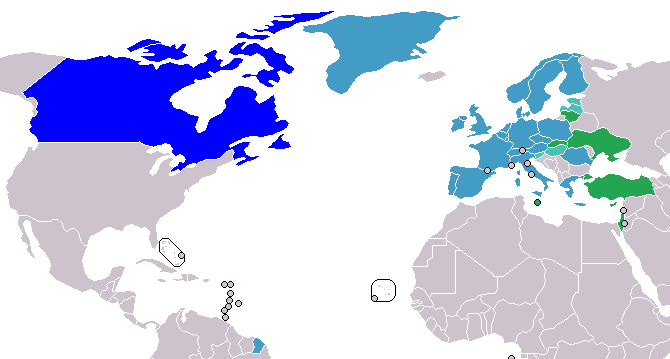European Space Agency’s Intermediate eXperimental Vehicle (IXV) : The Spaceplane’s Orbital Flight
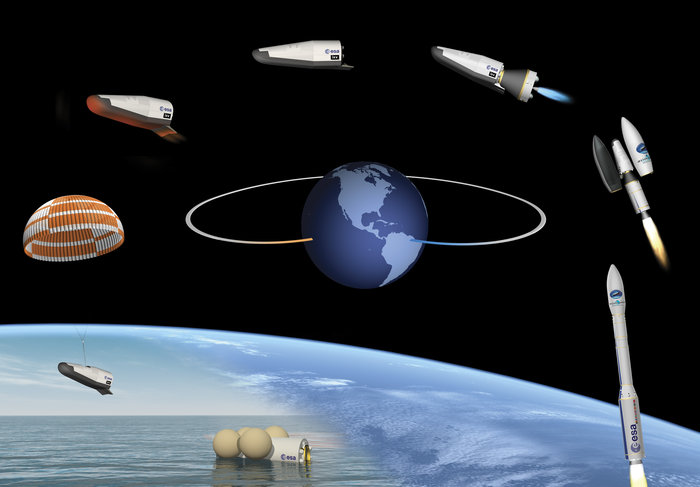
The European Space Agency’s Intermediate eXperimental Vehicle (IXV) was launched on 11th of February 2015.
A prototype for a versatile mini-spaceplane has successfully completed its first test flight, splashing down in the Pacific Ocean.
The aim is to provide Europe with a re-useable orbital transportation system of its own. The IXV spaceplane lifted off at 13:40 GMT (14:40 CET, 10:40 local time) on 11th February 2015 from Europe’s Spaceport in Kourou, French Guiana atop a Vega rocket. It separated from Vega at an altitude of 340 km and continued up to 412 km. Reentering from this suborbital path, it recorded a vast amount of data from more than 300 advanced and conventional sensors.
The demonstrator flew east around the globe, before coming down in the water west of the Galapagos Islands at about 15:20 GMT.
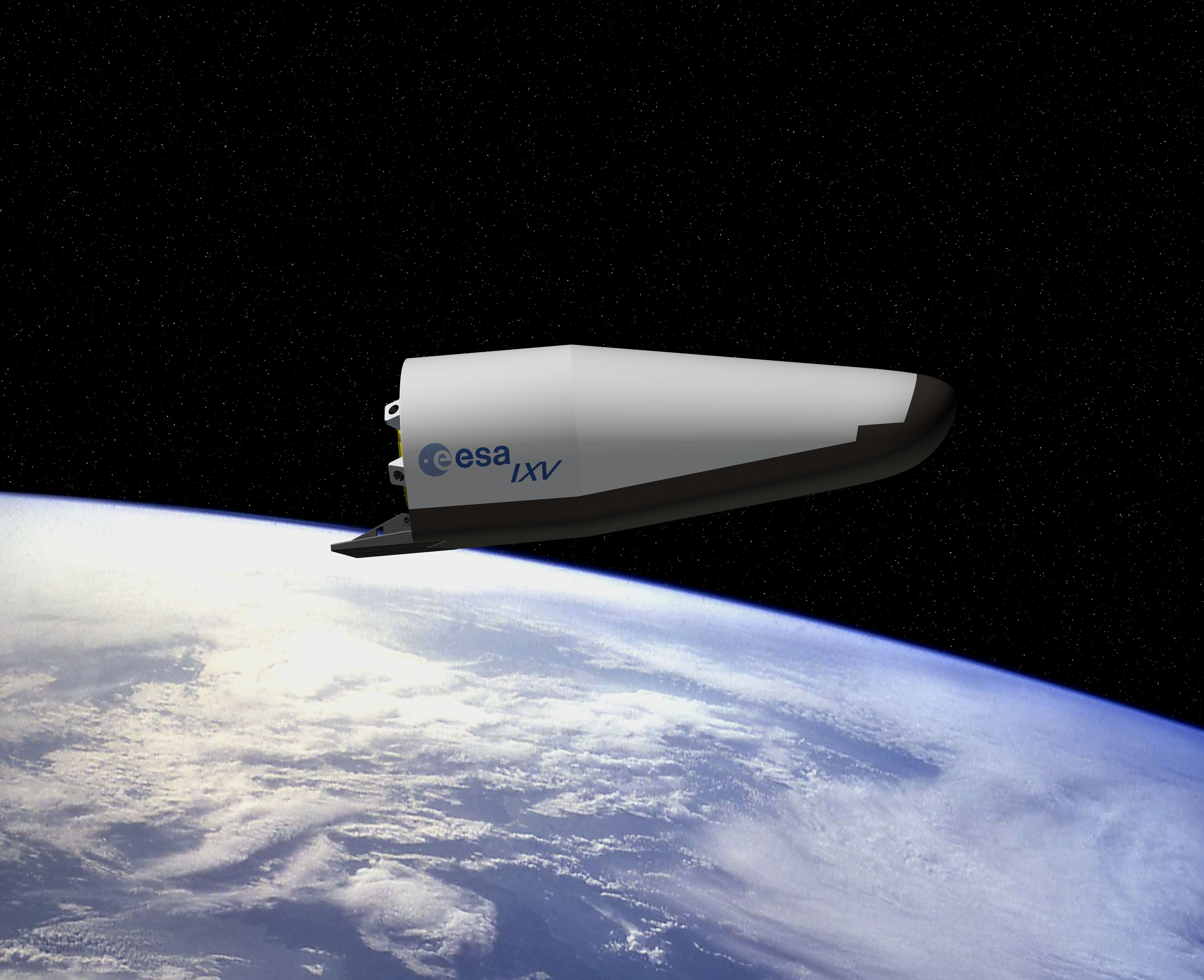
The IXV is an Italian-led project within ESA.
ESA’s project manager Giorgio Tumino :
“Europe is excellent at going to orbit; we have all the launchers, for example. We also have great knowhow in operating complex systems in orbit. But where we are a bit behind is in the knowledge of how to come back from orbit. So, if we are to close the circle - go to orbit, stay in orbit, come back from orbit - this third leg we need to master as well as other spacefaring nations.”
The Mission Control Centre at the Advanced Logistics Technology Engineering Centre (ALTEC) in Torino, Italy, will closely monitor IXV during its mission. This facility will also be in charge of coordinating the activities of the entire ground segment, including the fixed ground stations in Libreville (Gabon) and Malindi (Kenya), and the naval station on the recovery ship in the Pacific Ocean.
The vehicle is 5m long and and weighs almost two tonnes. The unmanned Intermediate eXperimental Vehicle (IXV) will launch atop a Vega rocket from South America, fly east around the globe, before splashing down in the Pacific Ocean. The wedge-shaped craft is designed to gather information on how space objects fall back to Earth.
Engineers could use the data to inform a range of future technologies from re-usable rockets to Mars landers. Lift-off for the Vega from French Guiana is timed Wednesday, the 11th of february 2015, for 10:00 local time (13:00 GMT). It will throw the IXV to an altitude of 450km, from where the European Space Agency (ESA) test article will then begin its rapid descent.
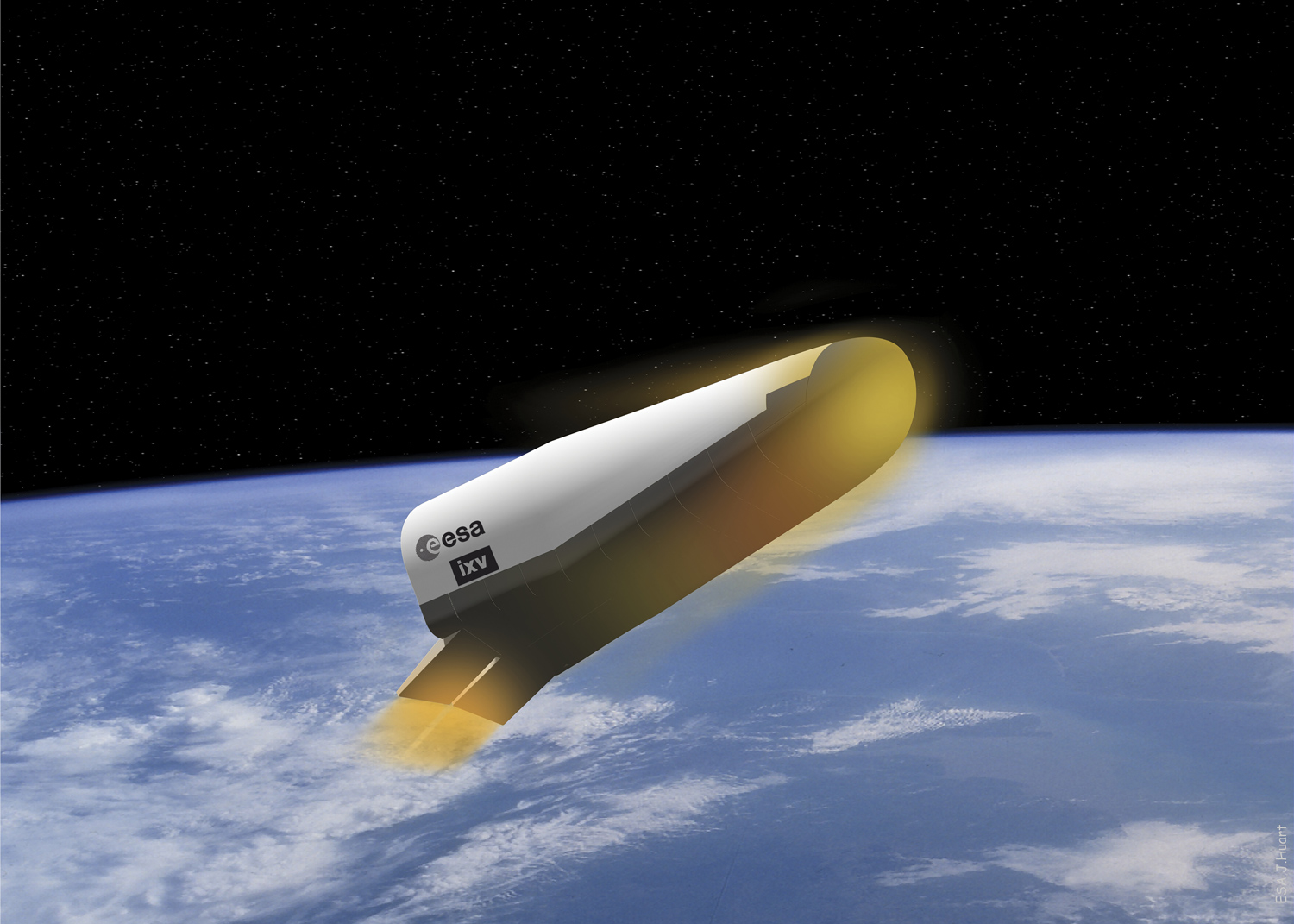
This IXV mission will test cutting-edge system and technology aspects to provide Europe with an independent reentry capability, and a building block for reusable space transportation systems. It will validate designs for lifting-bodies, incorporating both the simplicity of capsules and the performance of winged vehicles, with high controllability and manoeuvrability for precision landing.
The Intermediate eXperimental Vehicle (IXV) project objectives tackle the basic European needs for reentry from LEO, consolidating the knowledge necessary for the development of any future European reentry system while allowing risk limitation. After being launched into space, IXV will return to Earth as if from a low-orbit mission, testing brand-new European atmospheric reentry technologies during its hypersonic and supersonic flight phases.
The IXV project is developing and flight-testing the technologies and critical systems for Europe’s future autonomous controlled reentry for return missions from low Earth orbit.
The experimental vehicle is 5 m long, 1.5 m high, and 2.2 m wide – about the size of a car – and weighs almost 2 t.
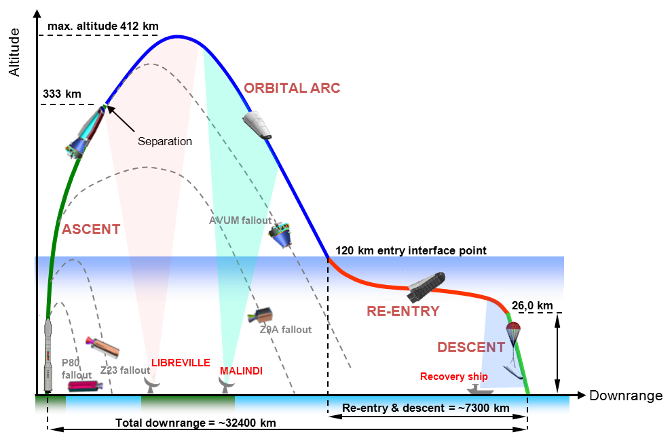
Launch and recovery
IXV will be injected into a suborbital path by a Vega rocket launched from Europe’s Spaceport in French Guiana in February 2015. IXV will separate from Vega at an altitude of 340 km. It will attain an altitude of around 412 km, allowing it to reach a speed of 7.5 km/s when reentering the atmosphere at an altitude of 120 km – fully representative of any return mission from low orbit. It will collect a large amount of data during its hypersonic and supersonic flight, while being controlled by thrusters and aerodynamic flaps.
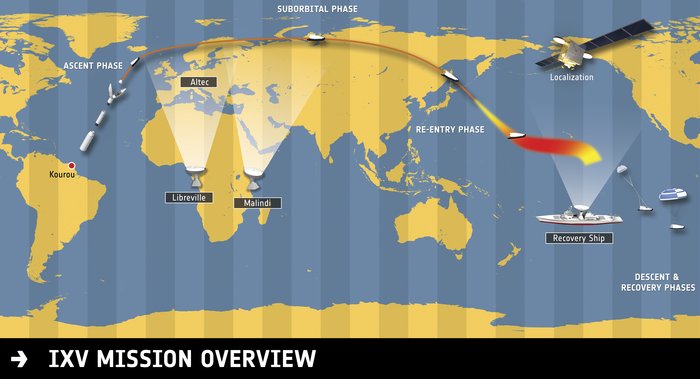
The craft deployed a parachute to slow its descent for a safe splashdown in the Pacific Ocean to await recovery and analysis.
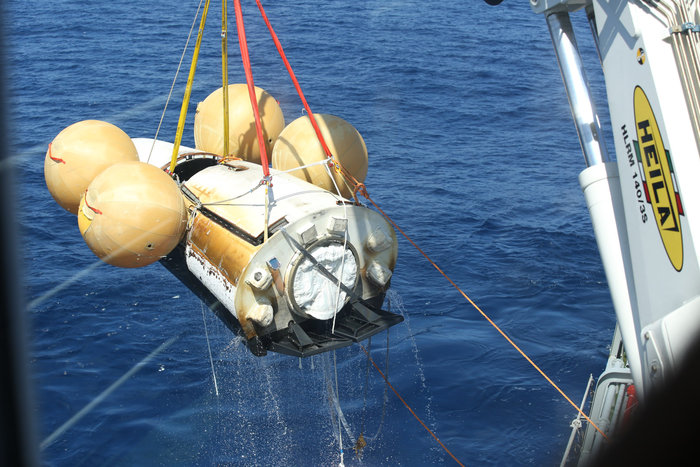
Recovery of ESA’s Intermediate eXperimental Vehicle in the Pacific Ocean just west of the Galapagos islands.
As it descended, the five-metre-long, two-tonne craft manoeuvred to decelerate from hypersonic to supersonic speed. The entry speed of 7.5 km/s at an altitude of 120 km created the same conditions as those for a vehicle returning from low Earth orbit. IXV glided through the atmosphere before parachutes deployed to slow the descent further for a safe splashdown in the Pacific Ocean.
The test data could also inform future Mars landing technologies.
The wedge-shaped IXV (Intermediate eXperimental Vehicle) was designed to gather information on how space objects fall back to Earth.
Commenting on the flight, Esa director-general Jean-Jacques Dordain said: “It couldn’t have gone better. But the mission itself is not over because now it is necessary to analyse all the data gathered during the flight.”
At the time the craft re-entered the atmosphere, it was moving at 7.5km/s. As it pushed against the air, the temperatures on its leading surfaces would have soared to 1,700C. Flaps and thrusters controlled the trajectory, ensuring the IXV came down close to a recovery ship.
Flaps and thrusters were used to control the trajectory, ensuring the IXV comes down close to a recovery ship some 3,000km west of the Galapagos Islands. A parachute system was deployed in the very late stages of the flight, puting the two-tonne vehicle gently in the water. Floatation balloons come out to stop it from sinking. Beginning to end, the complete mission lasted approximately one hour and 40 minutes.
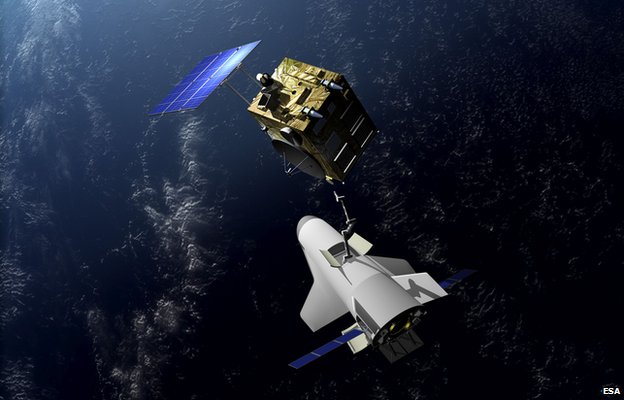
ESA has already approved a follow-on project called Pride (Programme for Reusable In-orbit Demonstrator in Europe). Pride is expected to fly in space by 2020.
This would see the development of another re-entry vehicle but with a key difference - the ability to land on a runway. Missions will be likely to include the early testing of new technologies for future satellites. In-orbit servicing of satellites is a capability often discussed in this context as well.
ESA nations will meet shortly to define these roles.
“We need still to agree with all the member states all the different types of operations in orbit. But whatever the payload, it will always be in the perimeter space of civilian applications” - Giorgio Tumino, ESA’s IXV Project Manager.
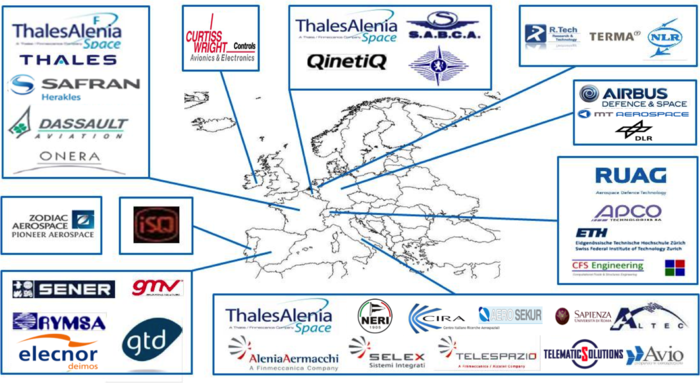
A truly European Endeavour and Collaboration : IXV represents the industrial, technological and scientific expertise of a consortium of around 40 industries, research centres and universities, mainly in Italy, France, Spain, Switzerland, Belgium, Ireland and Portugal, with support coming from Germany and the Netherlands.
The European Space Agency (ESA; French: Agence spatiale européenne, ASE) is an intergovernmental organisation dedicated to the exploration of space, with 21 member states. Established in 1975 and headquartered in Paris, France, ESA has a staff of more than 2,000 with an annual budget of about €4.28 billion / US$5.51 billion (2013).
ESA’s space flight programme includes human spaceflight, mainly through the participation in the International Space Station programme, the launch and operations of unmanned exploration missions to other planets and the Moon, Earth observation, science, telecommunication as well as maintaining a major spaceport, the Guiana Space Centre at Kourou, French Guiana, and designing launch vehicles. The main European launch vehicle Ariane 5 is operated through Arianespace with ESA sharing in the costs of launching and further developing this launch vehicle.
ESA science missions are based at ESTEC in Noordwijk, Netherlands, Earth Observation missions at ESRIN in Frascati, Italy, ESA Mission Control (ESOC) is in Darmstadt, Germany, the European Astronaut Centre (EAC) that trains astronauts for future missions is situated in Cologne, Germany, and the European Space Astronomy Centre is located in Villanueva de la Cañada, Madrid, Spain.
